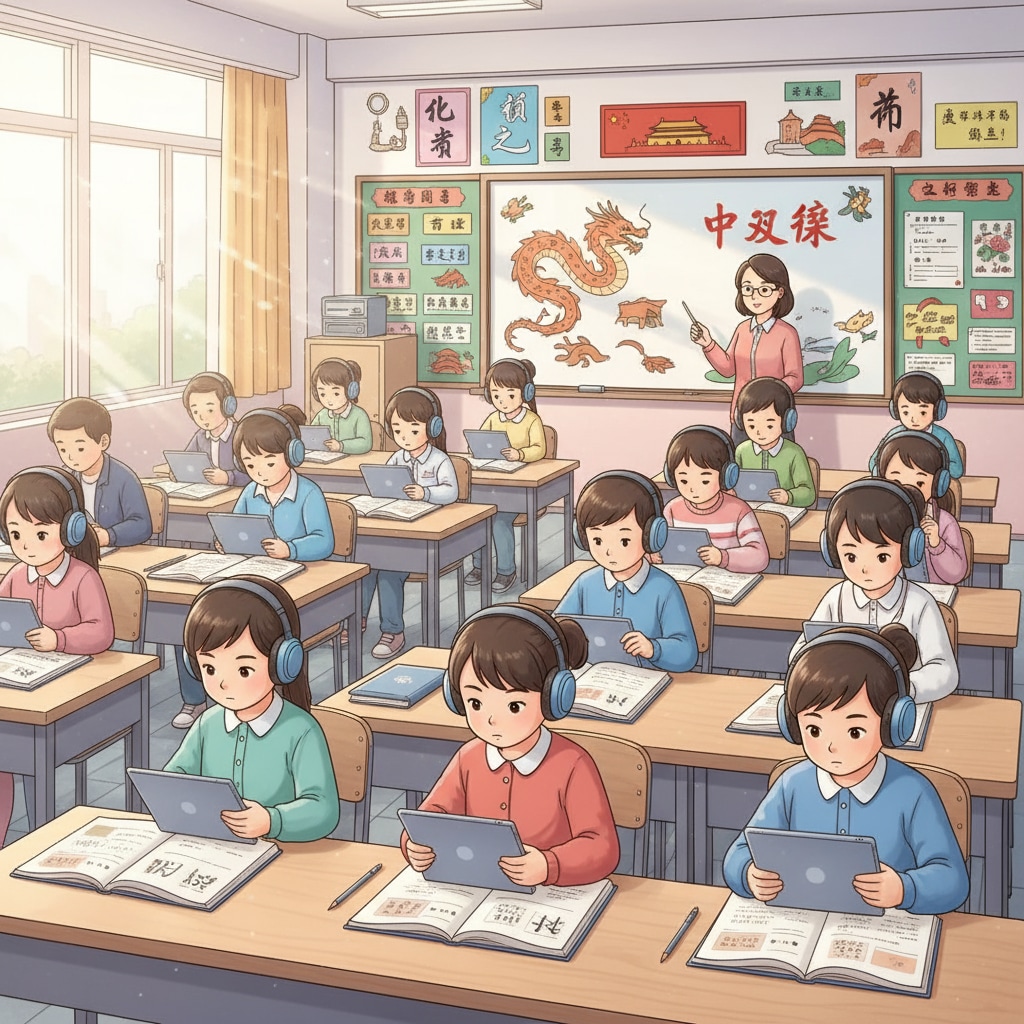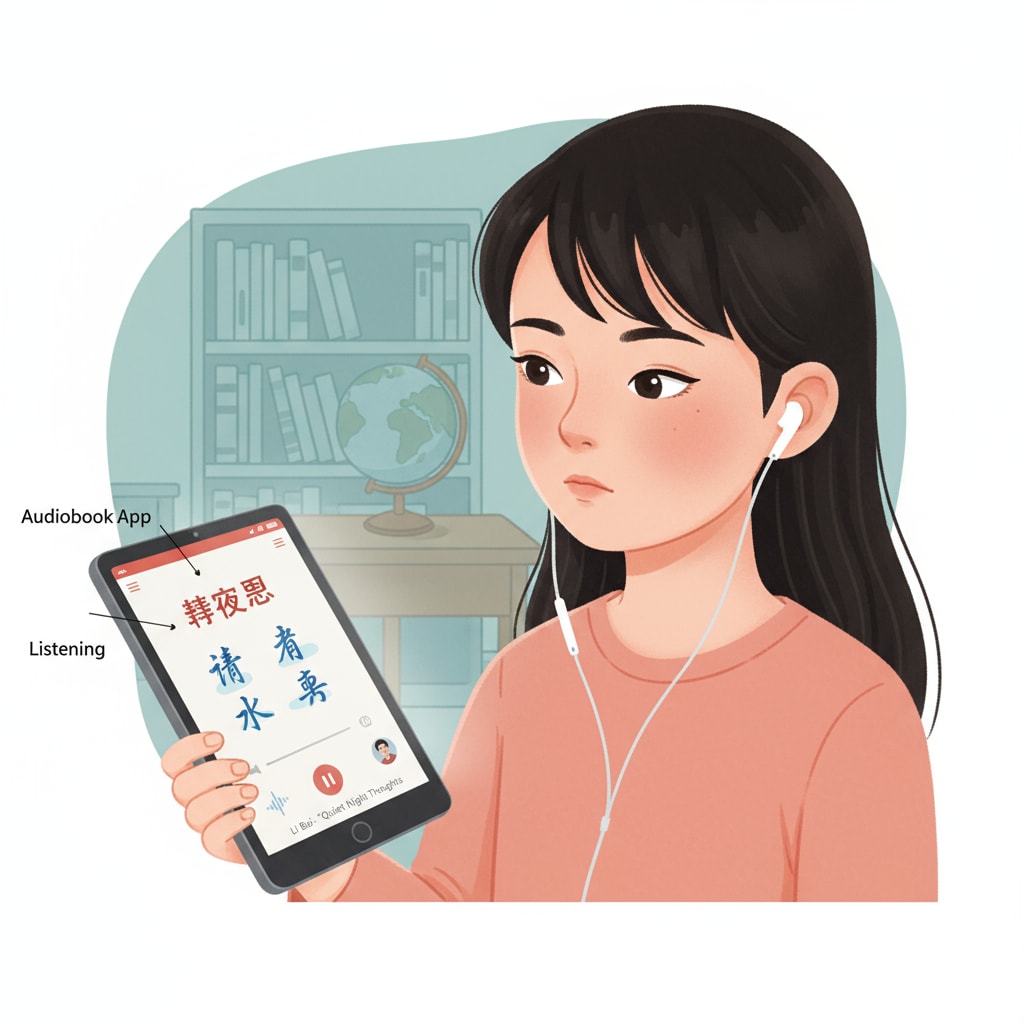In the realm of middle school Chinese teaching, the question of whether audiobooks can serve as a suitable alternative to traditional reading in enhancing reading fluency has sparked extensive debate. As educational methods evolve, it’s crucial to understand the implications of integrating audiobooks into the Chinese language curriculum.

The Rise of Audiobooks in Language Education
Audiobooks have gained significant popularity in recent years. With the development of technology, they offer a convenient way for students to engage with written materials. For example, during Chinese language study, students can listen to classic Chinese literature while on the go. According to Language learning methods on Wikipedia, incorporating multimedia resources like audiobooks can diversify the learning experience. This new form of “reading” presents both opportunities and challenges for middle school Chinese teaching.

Cognitive Development: Audiobooks vs. Traditional Reading
When it comes to cognitive development, traditional reading and audiobooks have distinct impacts. Traditional reading requires students to visually process words, which helps in developing skills such as vocabulary recognition and comprehension strategies. On the other hand, audiobooks rely on auditory processing. While this can improve listening skills, it may not be as effective in promoting in-depth cognitive engagement as traditional reading. As stated in Educational psychology on Britannica, the physical act of reading words on a page stimulates different neural pathways compared to listening to an audiobook. In Chinese teaching, this difference can affect how students understand complex language structures and cultural connotations.
Moreover, traditional reading allows students to control the pace. They can pause, reread, and reflect on difficult passages. Audiobooks, however, play at a fixed pace, which might prevent some students from fully grasping the content. This can be particularly challenging in Chinese, where the language’s richness and complexity require careful digestion.
Readability guidance: We’ve seen the differences in cognitive development between audiobooks and traditional reading. Next, let’s explore their impact on reading fluency.
Reading Fluency: The Role of Audiobooks
Audiobooks can contribute to reading fluency in certain ways. Listening to well-read Chinese texts can expose students to correct pronunciation, intonation, and rhythm. This can enhance their oral reading skills. For instance, when students listen to professional narrators read Chinese poems, they can better understand the cadence of the language. However, reading fluency also involves the ability to quickly recognize words and comprehend meaning while reading silently. Traditional reading practice is more directly related to developing this aspect of fluency.
In addition, the passive nature of listening to audiobooks might not fully engage students in the active process of reading. To truly improve reading fluency in Chinese, a combination of both listening to audiobooks and regular traditional reading practice is essential.
Readability guidance: Having discussed reading fluency, let’s move on to consider the aspect of deep learning in Chinese teaching with audiobooks.
Deep Learning in Chinese Teaching with Audiobooks
Deep learning in Chinese involves understanding the cultural, historical, and philosophical aspects embedded in the language. Traditional reading often provides a more immersive experience for students to engage in deep thinking. When reading classic Chinese novels, students can annotate, analyze, and form their own interpretations. Audiobooks, while convenient, may not facilitate the same level of in-depth exploration.
However, audiobooks can be used as supplementary resources. For example, after reading a text traditionally, listening to an audiobook version can reinforce understanding and offer a different perspective. This combination can help students achieve a more comprehensive understanding of Chinese language and culture.
Readability guidance: In conclusion, finding a balance between audiobooks and traditional reading is key in middle school Chinese teaching.
In conclusion, while audiobooks have their merits in middle school Chinese teaching, especially in promoting listening skills and exposing students to proper language intonation, they cannot fully replace traditional reading. A balanced approach that combines the strengths of both methods is crucial for enhancing students’ reading fluency, cognitive development, and deep learning in the Chinese language. Teachers should carefully design teaching activities that integrate audiobooks and traditional reading materials to meet the diverse learning needs of students. This way, students can not only enjoy the convenience of audiobooks but also benefit from the profound learning experience that traditional reading offers in the context of Chinese language education.


